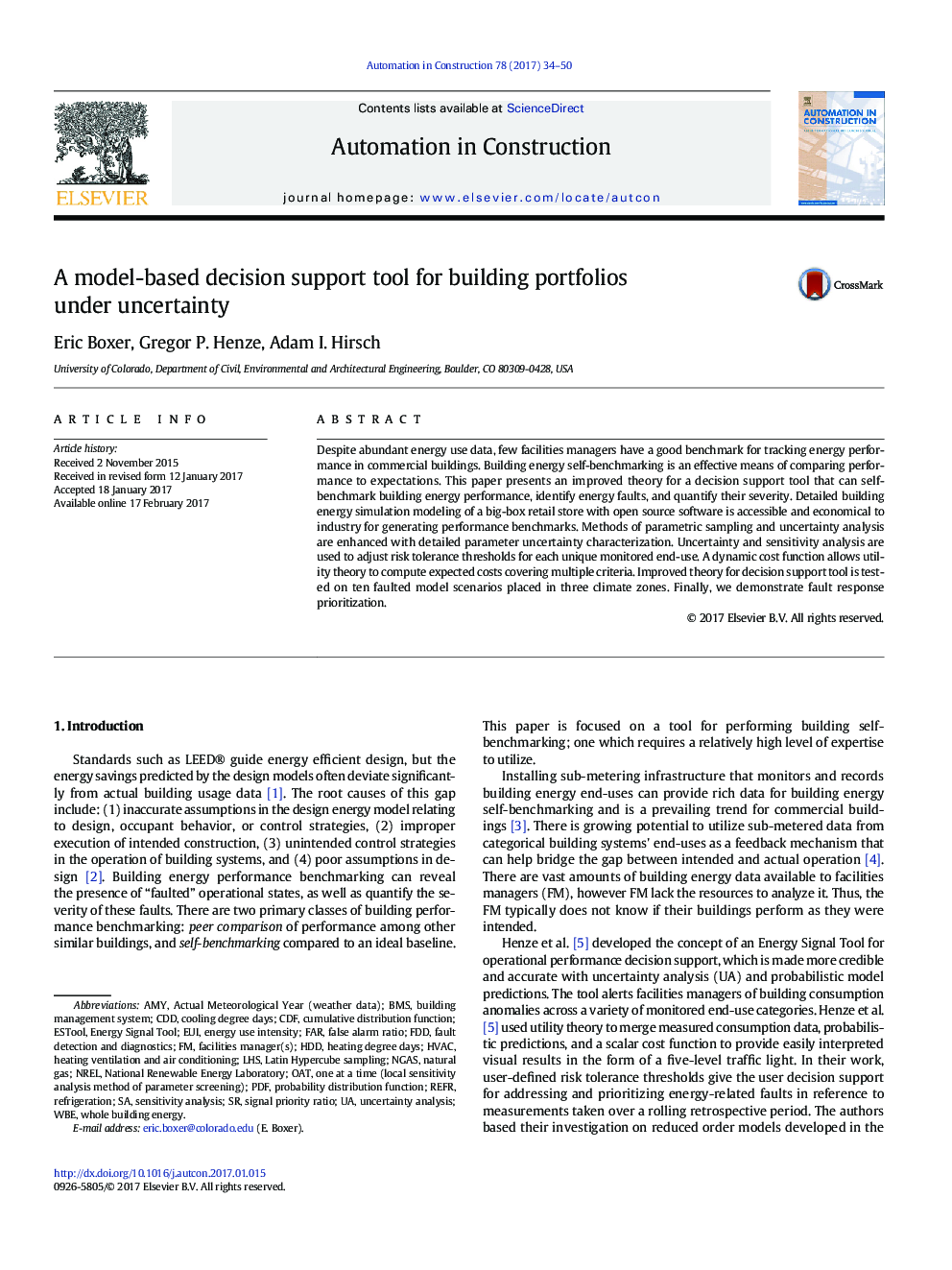| Article ID | Journal | Published Year | Pages | File Type |
|---|---|---|---|---|
| 4911341 | Automation in Construction | 2017 | 17 Pages |
Abstract
Despite abundant energy use data, few facilities managers have a good benchmark for tracking energy performance in commercial buildings. Building energy self-benchmarking is an effective means of comparing performance to expectations. This paper presents an improved theory for a decision support tool that can self-benchmark building energy performance, identify energy faults, and quantify their severity. Detailed building energy simulation modeling of a big-box retail store with open source software is accessible and economical to industry for generating performance benchmarks. Methods of parametric sampling and uncertainty analysis are enhanced with detailed parameter uncertainty characterization. Uncertainty and sensitivity analysis are used to adjust risk tolerance thresholds for each unique monitored end-use. A dynamic cost function allows utility theory to compute expected costs covering multiple criteria. Improved theory for decision support tool is tested on ten faulted model scenarios placed in three climate zones. Finally, we demonstrate fault response prioritization.
Keywords
WBEEUINRELFDDBMSHDDLHSCDFCDDNational Renewable Energy LaboratoryAMYFARCumulative Distribution FunctionRefrigerationUncertainty analysisSensitivity analysisFault detection and diagnosticsHeating ventilation and air conditioningHVACOatHeating degree daysCooling degree daysBuilding Management SystemEnergy use intensityProbability distribution functionLatin hypercube samplingPdfNatural gas
Related Topics
Physical Sciences and Engineering
Engineering
Civil and Structural Engineering
Authors
Eric Boxer, Gregor P. Henze, Adam I. Hirsch,
